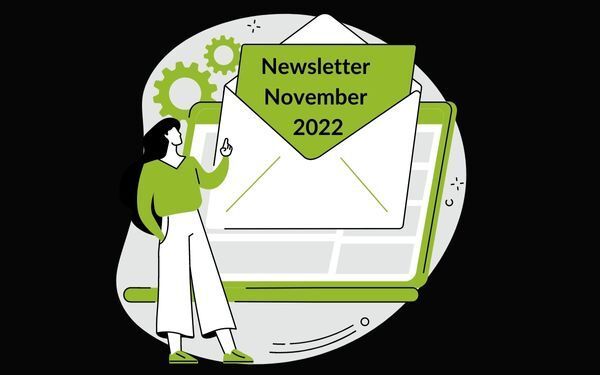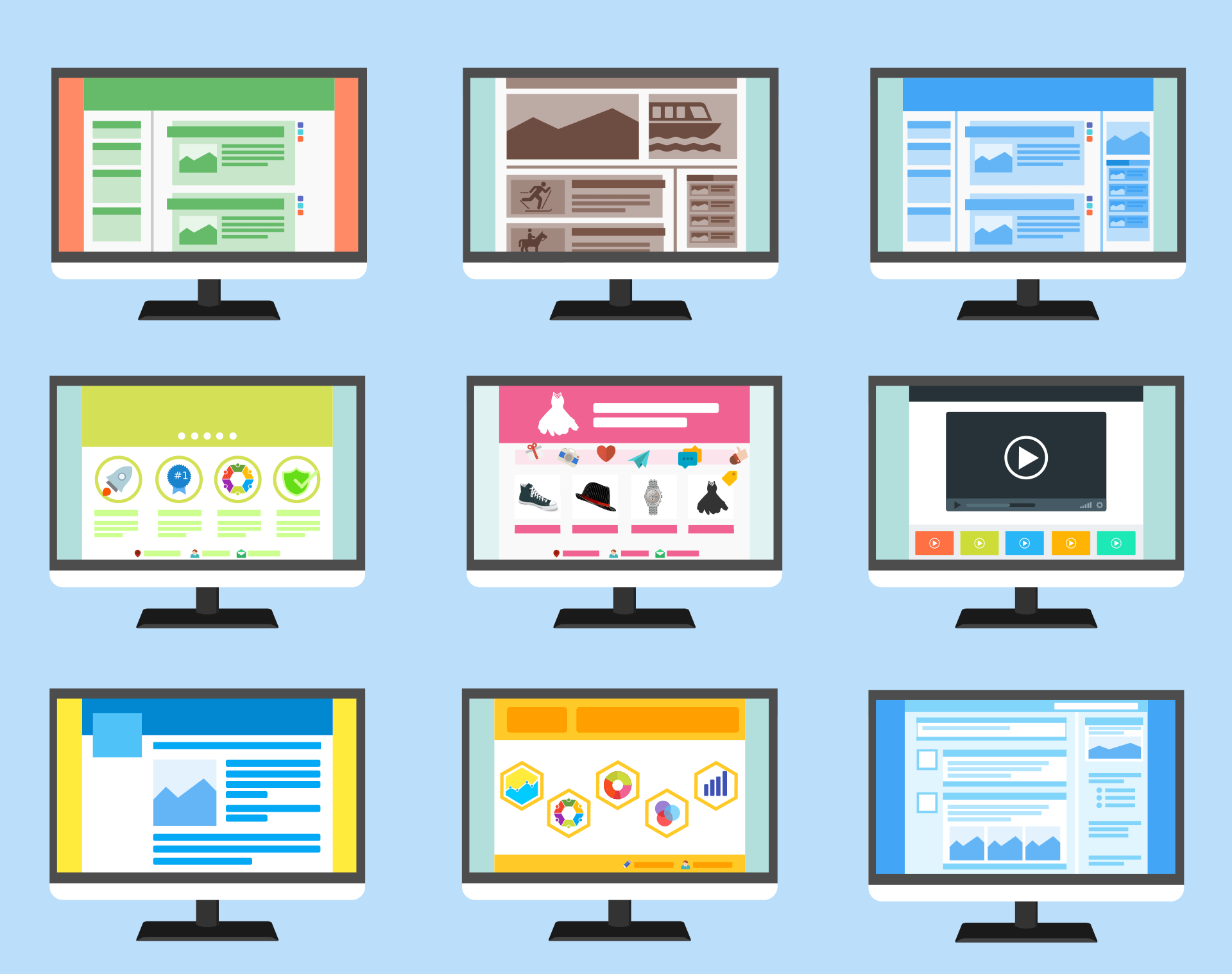Mobile matters: eight statistics on mobile vs. desktop usage that you need to know

As of December 2022, mobile devices had a 60.29% global market share of internet traffic according to Statcounter. That means that around the world, a customer’s first encounter with a business is more likely to be on a mobile device than a desktop. This trend is only growing too. When we first started tracking mobile vs desktop share in June 2020 Statcounter were reporting a 50.13% mobile share – a significant change in just 18 months. We take a look at some of the latest statistics for mobile usage in 2023 and what it means for UK businesses.
1. In the UK, your website is more likely to be viewed on a mobile or tablet device than a desktop
The latest figures from Statcounter show that mobile and tablet browsing account for 54.06% of market share in the UK. Building responsive websites that work across different devices is essential to ensure a good user experience. If your website isn’t responsive it is likely to be costing your business money. Research by Google shows that 61% of users are unlikely to return to a mobile site they’ve had difficulties accessing and 40% will go to a competitor instead.
2. 50% of business to business enquiries are made on mobile
According to Techjury, 50% of B2B enquiries are made on mobile devices. As more businesses continue to develop their mobile platforms that figure is likely to grow even further with more and more business interactions taking place on mobile. Your website must make a great first impression when B2B customers first encounter you if you want to secure their business.
3) Over 50% of emails are opened on a mobile
85% of internet users use their smartphone to check email. Amongst those aged 25-34 this rises to 90%. When it comes to how specific email campaigns are opened, the figures vary significantly depending on factors like the age of recipient, type of email and industry. However, email marketing firm Campaign Monitor conclude that almost every study in to email open rates report thatmobile is responsible for at least 50% of all opens. Furthermore, the consequences for sending out emails that display poorly on phones can be significant. In their 2016 Consumer adoption and usage study, Adestra found that around 70% of people simply delete emails that don’t display correctly on their phone and around 25% of younger mobile users will actually unsubscribe as a result. If you’re investing in email marketing then it’s essential that your emails are formatted for mobile, not too long and look great on a small screen.
4) Nearly 80% of all time spent on social media is on mobile devices
Social media is a huge part of many people’s daily life. 84.3% of the UK’s population used social media as of February 2022, and, chances are, when they’re looking at social media, they’re doing it on a mobile device. According to US firm Lyfe Marketing, 91% of all social media users access channels via mobile devices, and almost 80% of all time spent on social media is on mobile devices. A lot of visual content is shared on social media from images to infographics and videos. In fact, according to Techjury, more than half of all video views take place on mobile devices. Knowing this, it’s important to design your social media content for mobile.
5) Mobile ad spend is at least in line with, if not exceeding, desktop
Figures vary, but we’re undeniably at the intersection of when
mobile and desktop ad spend are comparable, with mobile possibly edging out in front. Your competitors are already advertising on mobile and it’s a valuable market that is only likely to grow. Statista estimate that mobile advertising in the UK had a value of
18.8 billion US dollars in early 2021, but that by 2025 this will have grown to 29.3 billion USD. With
93% of the UK population owning a smartphone, it’s essential that your advertising strategies tap in to this market.
6) Bounce rates are still higher for mobile than desktop…but they are falling
A website’s bounce rate is the percentage of visitors who navigate away after viewing only one page. Many factors influence bounce rates, but some argue that user experience when browsing on mobile plays a significant role. Techjury point to the falling average bounce rate for mobile as evidence of this. From 2016 to 2018 mobile bounce rates fell from 52% to 45%. They suggest that either the experience for mobile users is improving or users are getting more comfortable with mobile browsing. Designing websites that look great on mobile is an essential step for businesses to reduce their chances of design-related bounces for mobile users.
7. More sales still happen on desktop…but not in every industry and mobile is growing
When it comes to online purchases, the overall trend is that consumers still prefer to buy on a desktop. According to marketing company Hitwise, a study of market share for the top 20 retail sites shows that for web browser purchases, 72% take place on desktop compared with 28% on mobile. However, viewing and selection is evenly split (50-50) desktop to mobile – so mobile experience still plays a vital role in decision-making. Sales market share also varies significantly by industry. The State of Fashion eCommerce in 2019 report found that combined online sales for mobile and tablet in the fashion industry equated to 56% compared to 44% for desktop.
8. By 2025, over 10% of all US retail sales are expected to be via mobile commerce
Mobile commerce is an enormous market, so much so that predictions suggest over 10% of all US retail sales will be via mobile commerce by 2025. In order to capitalise on this market business should ensure that as a minimum their e-commerce websites are mobile friendly, but also look further to whether a mobile app could aid sales.
What does this all mean for UK businesses?
There are some clear take-home messages from these trends to keep in mind whenever you’re creating content or representing your business online:
• Business websites must not only work seamlessly on desktop, mobile and tablet but they need to offer a great user experience on all devices.
• Emails, and particularly e-mail marketing campaigns, should be designed with mobile in mind; badly formatted emails on mobile devices could lose you subscribers.
• Social media content needs to be mobile and tablet compatible – with images, videos and infographics scaled accordingly. If using video, content should be captioned. Verizon Media report that 92% of mobile users and 83% of all users consume online ads with the sound off.
• Businesses should consider mobile ads as part of new digital marketing campaigns and track customer behaviours. Facebook Ads Manager for instance allows you to track where the majority of ad clicks are coming from so you can target accordingly.
• Businesses need to think about how they convert mobile views of products to sales, whether that is inspiring greater confidence in mobile websites or developing complementary shopping apps.
Experienced web design and digital marketing agency in Exeter
Having a responsive website that looks great on mobile and tablet devices is the single biggest step businesses can take to ensure that mobile customers have a good experience. At QuayClick, we design fully responsive websites that work on desktop, tablet and mobile. We can take a look at your existing website and see where it may not be working. We can also give your website a fresh new look or design.
If you’re planning on running mobile ads or a digital marketing campaign on social media we can also help you identify where to invest your efforts and create great mobile-friendly content. To find out more, contact us in Exeter today.



QUICK LINKS
QC Newsletter sign-up
We will get back to you as soon as possible.
Please try again later.
All Rights Reserved | QuayClick Marketing Ltd
We’re a website design and digital marketing agency based in Exeter. We help businesses grow online and have over 20 years of experience in Web Design. We offer several inbound strategies, including paid search and SEO. In addition, our content team can help with copywriting and email campaigns.











